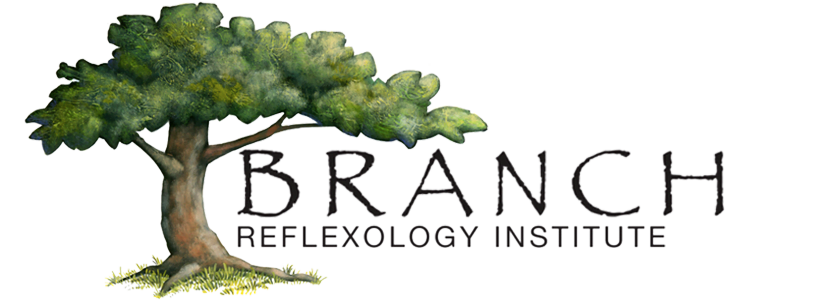National Institutes of Health (NIH) GRANT FINDINGS
Reflexology Grant Results – NIH Funds Grant # 2
By Barbara A. Brower
Nationally Board Certified Reflexologist
Lead Reflexologist for Michigan State University National Institutes of Health $3.1 Million Grant (2005-2011)April 29th, Friday 2011 Data findings were disclosed to all those involved with the grant over the past 5 years at a day long conference held at Michigan State University, Kellogg Center, East Lansing, Michigan.On May 17th, I met with Dr. Wyatt, Principle Investigator and Dr. Alla Sikorskii, Co-Investigator and statistician.In the 5 year study, 451 women with advanced breast cancer on chemotherapy agreed to participate, and 385 provided complete data. Of these 385, 146 women were assigned to reflexology, and 141 women were able to complete their sessions with Reflexology. Patients received 4 sessions of Reflexology, 4 weeks in a row.One hundred and forty three (143) women received manipulation of the feet that was designed to be similar to reflexology, but delivered by lay people. Finally, 96 women were in the control group. Data were collected over 12 weeks.The reflexology protocol was composed of 9 steps. The sessions were held to 15 minutes per foot with 5 minutes of introduction and closure. The time frame was originally set by the Principle investigator. I was asked to create a protocol for these women with those parameters. The goal of this study was to improve quality of life for this fragile population of late stage 3 & 4 breast cancer patients who were on chemotherapy treatment.
My contribution as the Lead Reflexologist was to create a protocol that would relieve the symptoms of chemotherapy; thus improving the quality of life for the patient.
On a scale of 0-100, Reflexology improved physical function by 5 points, or about 10% compared to the control group. This improvement is substantial and reflects better ability to walk, carry groceries, climb stairs etc. This improvement in physical function resulted from the reduction in difficulty breathing from having received reflexology. Women in the reflexology group had less trouble breathing compared to women in the control group, and also compared to women who received lay foot manipulation.
Not one patient had a negative side effect from receiving Reflexology. This is a very important finding, especially in this fragile population.
The 3 things this grant has established for Reflexology are:
- Safety
- Feasibility, and
- Efficacy
This 5 year study is the largest federally funded grant ever awarded to Reflexology. Many studies in the past did not have a control group. This study was the first high quality (robust) study done with 2 comparative groups. It has established that Reflexology used in conjunction with standard medical care is beneficial to the patient.
This is a huge addition to the science of Reflexology!
And….grant number 2 is ready to begin!
The National Institutes of Health has awarded Michigan State University a second grant because of these statistics.
Grant # 2
Michigan State University also announced April 29th, 2011, the acquisition of a second NIH grant of comparable size will begin in the next few months for Reflexology.
The second grant will utilize the Reflexologists at each site to train the primary caregivers in the same 9 step protocol to be administered to their friend or family member. This time the primary caregiver is allowed to perform the 9 step protocol as often in the week as they would like, as long as they complete the 9 steps.
In Conclusion
This National recognition has established Reflexology in the medical community as safe and effective. I am very honored to have made a contribution in my field to see the return of Reflexology to hospitals where it first started in our country in the early 1900’s, with Dr. William Fitzgerald, M.D.
In Michigan, two very prestigious and progressive hospitals, William Beaumont in Royal Oak, and St. John Hospital in Grosse Pointe, have invited our Clinical Reflexology Training to their on-site schools. With ‘Centers for Integrative Medicine’ on-site at these hospitals, patients have the support of a variety of holistic therapies for enhancing their recovery.
Hospital nursing staff suggest to patients the list of services available at the patient bedside. Patients cover fees for services.
Doctors at these hospitals are informed by the Integrative Health Directors of the various modalities offered. Doctors have agreed, if you were trained on-site at their school, practitioners are given an open door policy to their patients, knowing they will ‘do no harm’.
This is our new health care evolving, and for Reflexology this is just the beginning!
Barbara A. Brower,
Nationally Board Certified Reflexologist
Lead Reflexologist, MSU Study
Available as a speaker to groups and/or associations interested in a more personal and comprehensive overview of the 5 year study.
